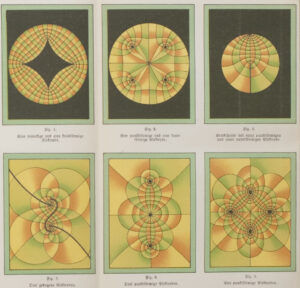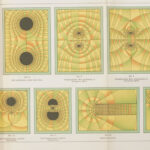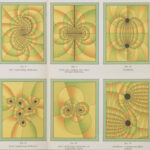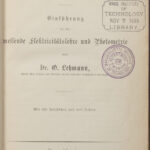Published: Braunschweig, 1895
Though initially it seems to be an unremarkable, standard textbook of its day, this volume by German physicist Otto Lehmann (1855-1922) holds a surprise for those who make it through to the final folded plates in the back, for the plates contain vivid, citrus-colored images depicting currents running along  power lines under various conditions. They’re striking and almost psychedelic in their intensity.
power lines under various conditions. They’re striking and almost psychedelic in their intensity.
The MIT Libraries own two copies of Elektricität und Licht, one of which was purchased for the Department of Physics the year it was published.
Three years after the publication of this work, the author discovered liquid crystals — substances that behave as liquids but have the optical properties of crystalline solids. This helped pave the path toward scientists’ realization that matter exists in more than just the three states of solid, liquid, and gas. In order to further his research on crystals, Lehmann also invented the crystallization microscope, now known as the heating stage microscope. Nominated for the Nobel Prize in Physics several times from 1913 until his death in 1922, Lehmann never was awarded the prize.



